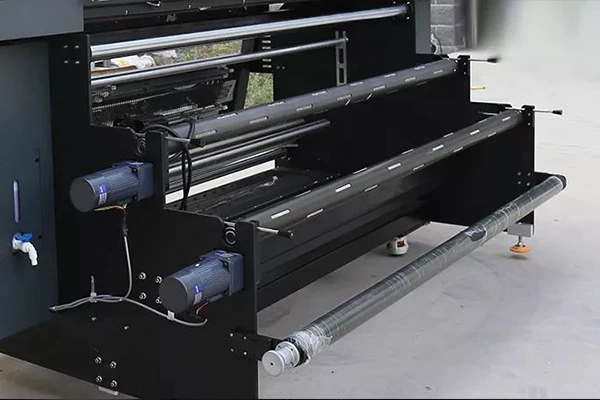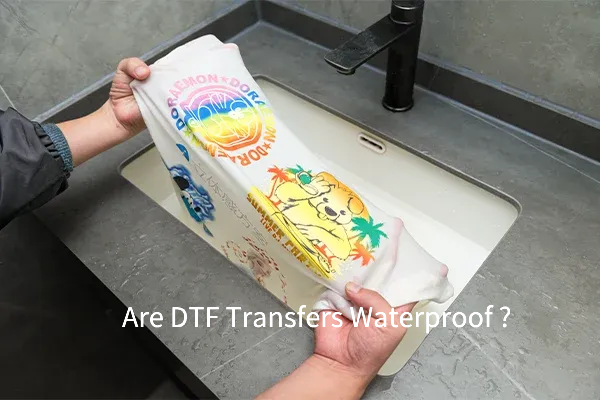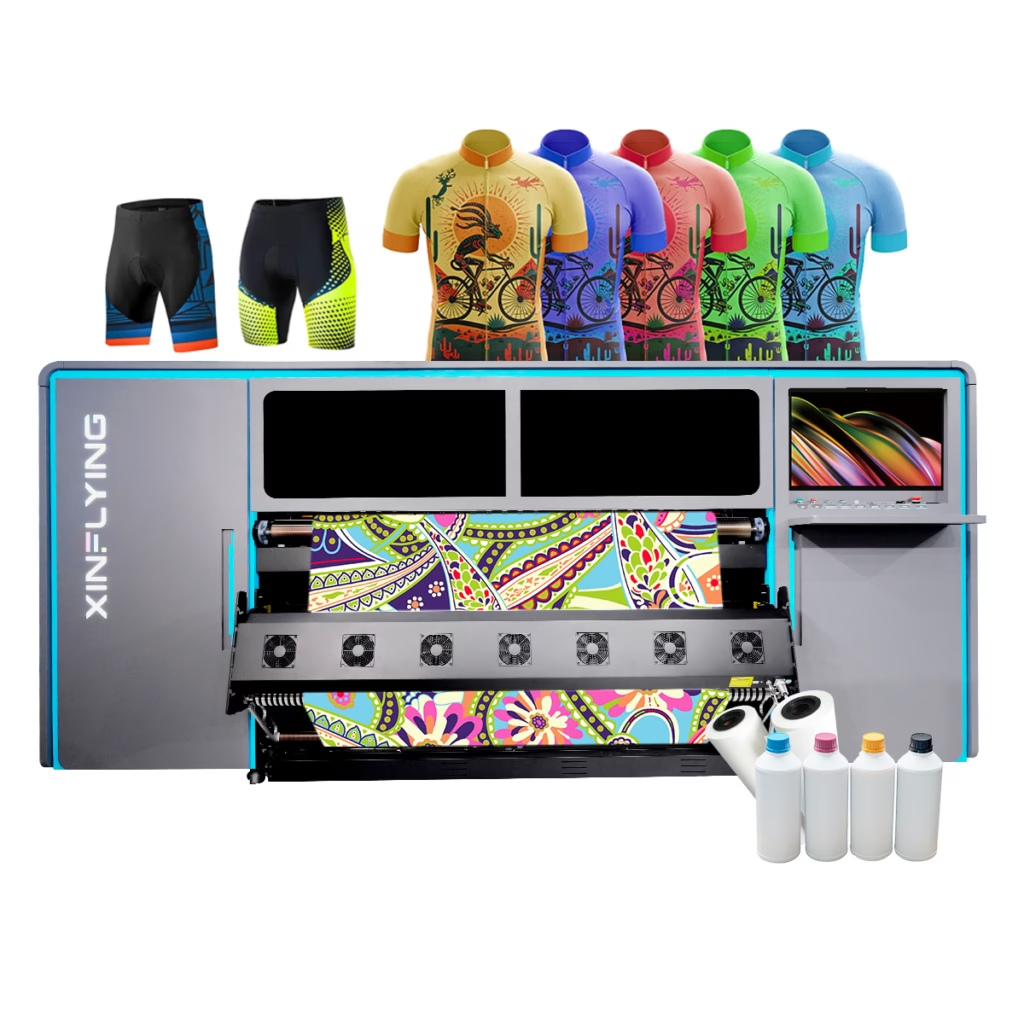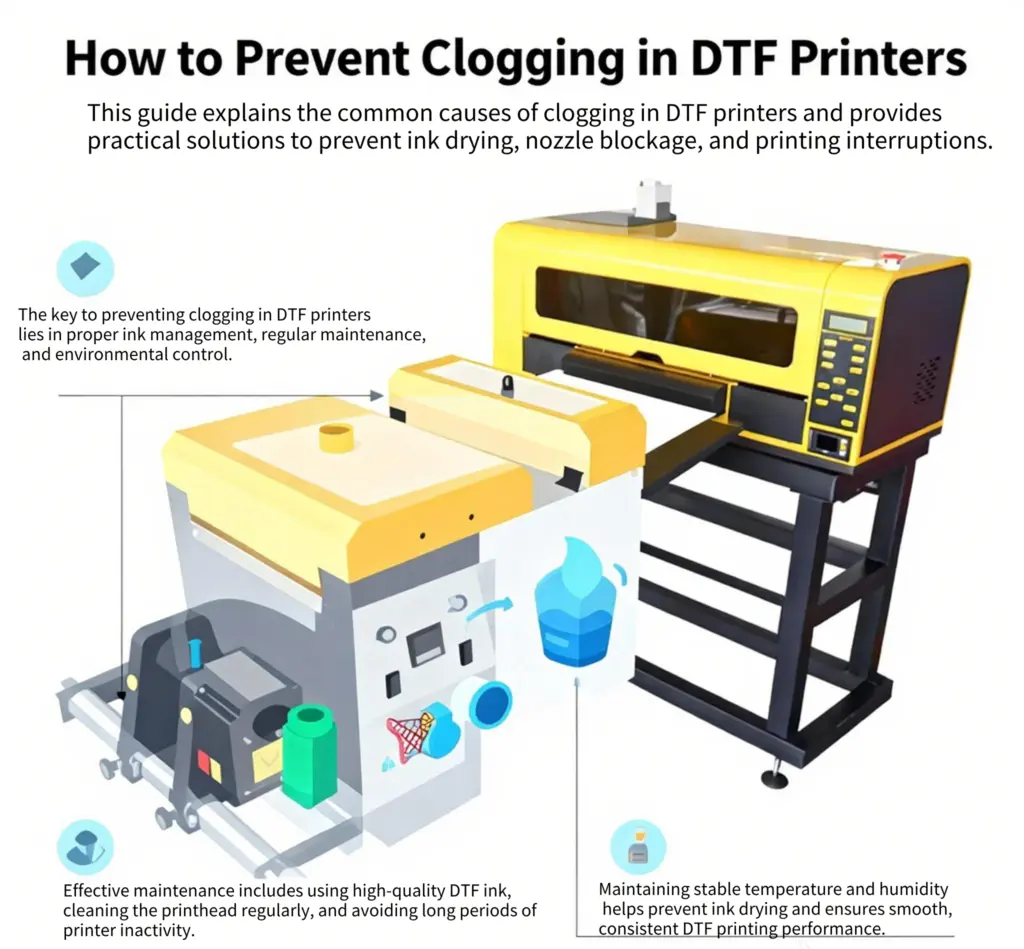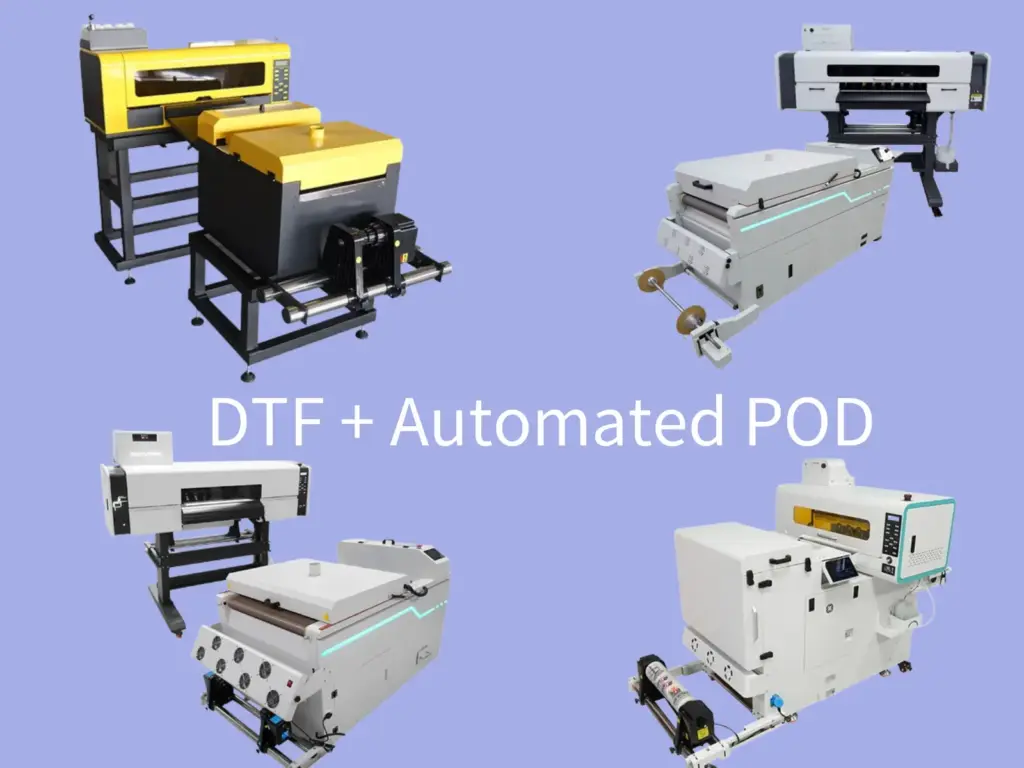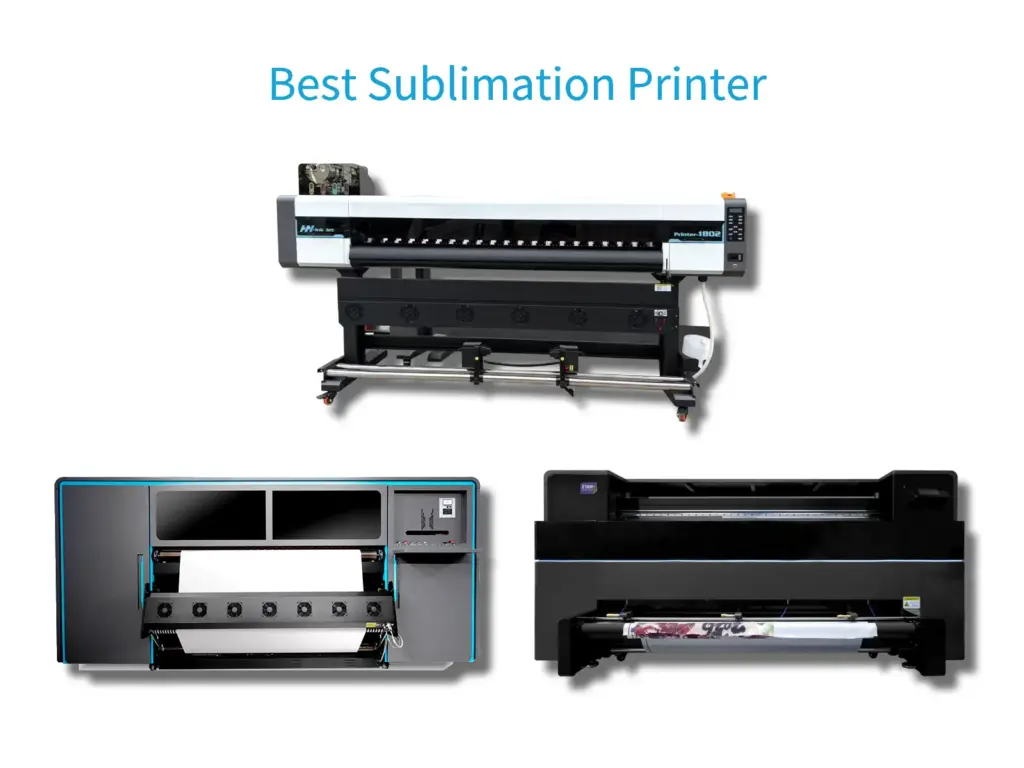
Πηγή: https://www.pinterest.com.au
Η εκτύπωση εξάχνωσης είναι μια δημοφιλής τεχνική εκτύπωσης που απαιτεί έναν εξειδικευμένο εκτυπωτή εξάχνωσης για την επίτευξη υψηλής ποιότητας, εκτυπώσεις μεγάλης διάρκειας σε διάφορα υποστρώματα. Η επιλογή του σωστού εκτυπωτή εξάχνωσης μπορεί να είναι μια τρομακτική εργασία, με τόσους πολλούς κατασκευαστές και μοντέλα διαθέσιμα στην αγορά.
Αυτός ο πλήρης οδηγός για εκτυπωτές εξάχνωσης καλύπτει όλα όσα πρέπει να γνωρίζετε, από τους διαφορετικούς τύπους εκτυπωτών που είναι διαθέσιμοι μέχρι τους βασικούς παράγοντες που πρέπει να λάβετε υπόψη κατά την επιλογή σας. Είτε είστε αρχάριος είτε έμπειρος Κατασκευαστής εκτυπωτή εξάχνωσης, αυτός ο οδηγός θα σας βοηθήσει να επιλέξετε τον κατάλληλο εκτυπωτή για τις ανάγκες σας και να επιτύχετε υψηλή ποιότητα, επαγγελματικά αποτελέσματα.
Τι είναι το Sublimation Printing?
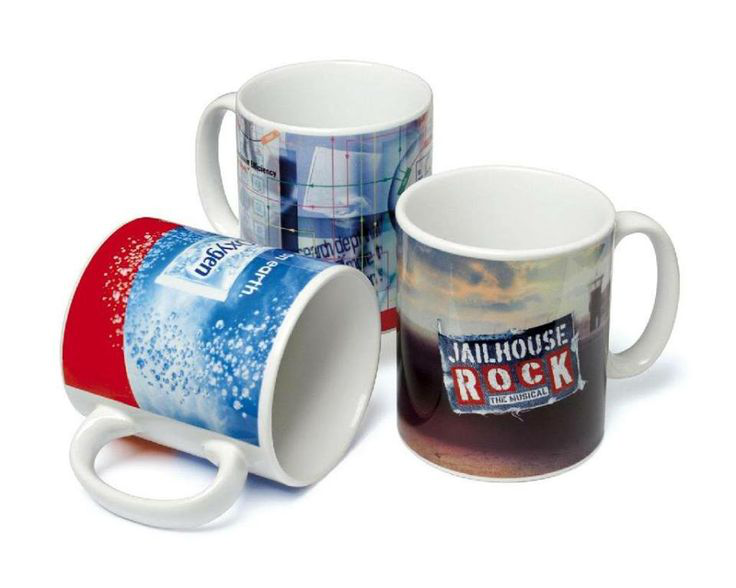
Πηγή: https://www.pinterest.com.au
Εκτύπωση εξάχνωσης είναι μια τεχνική ψηφιακής εκτύπωσης που περιλαμβάνει τη μεταφορά βαφής σε ένα υπόστρωμα (όπως ύφασμα ή πλαστικό) χρησιμοποιώντας θερμότητα και πίεση. Η διαδικασία περιλαμβάνει εκτύπωση της επιθυμητής εικόνας σε ένα εξειδικευμένο χαρτί μεταφοράς χρησιμοποιώντας μελάνι εξάχνωσης, που είναι ένας ειδικός τύπος μελανιού που μπορεί να μετατραπεί από στερεό σε αέριο χωρίς να περάσει από υγρή φάση.
Το χαρτί μεταφοράς τοποθετείται στη συνέχεια στο υπόστρωμα και υπόκειται σε θερμότητα και πίεση χρησιμοποιώντας μια πρέσα θερμότητας. Αυτό προκαλεί τη μετατροπή του μελανιού εξάχνωσης σε αέριο, το οποίο στη συνέχεια διαποτίζει τις ίνες του υποστρώματος και ενσωματώνεται μόνιμα στο υλικό. Το αποτέλεσμα είναι ένα υψηλής ποιότητας, ζωηρή και μεγάλης διάρκειας εκτύπωση που είναι ανθεκτική στο ξεθώριασμα και το ξεφλούδισμα.
Η εκτύπωση εξάχνωσης χρησιμοποιείται συνήθως για δημιουργία προσαρμοσμένων σχεδίων σε ρούχα, όπως μπλουζάκια, καπέλα, και φανέλες, καθώς και σε διαφημιστικά είδη όπως κούπες, καριέρες, και θήκες τηλεφώνου. Είναι μια δημοφιλής επιλογή για εκτύπωση σε πολυεστερικά υφάσματα, αλλά μπορεί να χρησιμοποιηθεί και σε άλλα υλικά όπως κεραμικά, μέταλλο, και ξύλο.
Διαδικασία εκτύπωσης εξάχνωσης
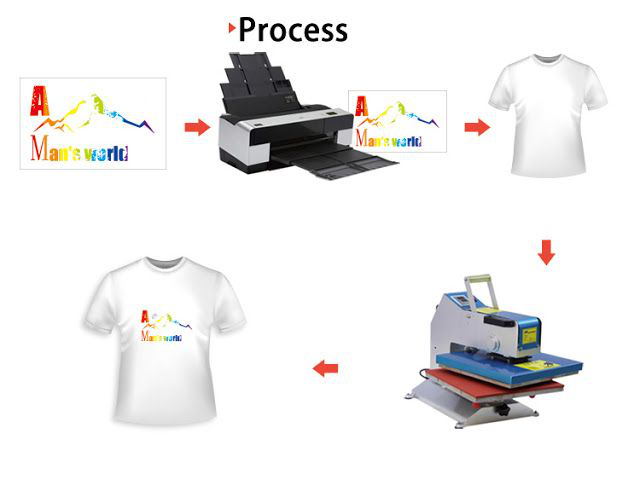
Πηγή: https://www.pinterest.com.au
Η διαδικασία εκτύπωσης εξάχνωσης περιλαμβάνει συνήθως τα ακόλουθα βήματα:
1. Σχέδιο
Δημιουργήστε ή επιλέξτε ένα σχέδιο που θέλετε να εκτυπώσετε στο υπόστρωμά σας. Αυτό μπορεί να γίνει χρησιμοποιώντας λογισμικό γραφιστικής ή αγοράζοντας προκατασκευασμένα σχέδια.
2. Εκτύπωση
Εκτυπώστε το σχέδιο σε χαρτί μεταφοράς εξάχνωσης χρησιμοποιώντας έναν εξειδικευμένο εκτυπωτή που είναι συμβατός με μελάνι εξάχνωσης.
Προετοιμασία του υποστρώματος: Προθερμάνετε την πρέσα θερμότητας στην κατάλληλη θερμοκρασία για το υπόστρωμά σας. Τοποθετήστε το υπόστρωμα στην πρέσα θερμότητας και πιέστε το εκ των προτέρων για μερικά δευτερόλεπτα για να αφαιρέσετε τυχόν υγρασία και ρυτίδες.
3. Τοποθέτηση του χαρτιού μεταφοράς
Τοποθετήστε το εκτυπωμένο χαρτί μεταφοράς με την όψη προς τα κάτω στο υπόστρωμα, φροντίζοντας να είναι κεντραρισμένο και το σχέδιο να είναι στραμμένο προς το υπόστρωμα. Στερεώστε το χαρτί μεταφοράς στη θέση του με ανθεκτική στη θερμότητα ταινία.
4. Εφαρμογή θερμότητας και πίεσης
Κλείστε την πρέσα θερμότητας και εφαρμόστε την κατάλληλη ποσότητα θερμότητας και πίεσης για τον προτεινόμενο χρόνο. Η θερμότητα και η πίεση θα αναγκάσουν το μελάνι εξάχνωσης να μετατραπεί σε αέριο και να διαποτίσει τις ίνες του υποστρώματος, δημιουργώντας έναν μόνιμο δεσμό.
5. Φινίρισμα
Μόλις τελειώσει ο χρόνος, ανοίξτε την πρέσα θερμότητας και αφαιρέστε το υπόστρωμα και το χαρτί μεταφοράς. Αφήστε το υπόστρωμα να κρυώσει και αφαιρέστε το χαρτί μεταφοράς. Το σχέδιο θα πρέπει τώρα να είναι μόνιμα ενσωματωμένο στο υπόστρωμα.
6. Έλεγχος ποιότητας
Επιθεωρήστε το υπόστρωμα για τυχόν ελαττώματα ή ελαττώματα, και να κάνετε τις απαραίτητες προσαρμογές ή διορθώσεις.
Υποστρώματα που μπορούν να χρησιμοποιηθούν με την εκτύπωση εξάχνωσης

Πηγή: https://inkteknigeria.com
Η εκτύπωση εξάχνωσης μπορεί να χρησιμοποιηθεί σε διάφορα υποστρώματα, αλλά είναι πιο κατάλληλο για υλικά που είναι κατασκευασμένα από πολυεστέρα ή έχουν επίστρωση πολυεστέρα. Ακολουθούν ορισμένα κοινά υποστρώματα που μπορούν να χρησιμοποιηθούν με την εκτύπωση εξάχνωσης:
- Ενδύματα
Η εκτύπωση εξάχνωσης χρησιμοποιείται συνήθως για την εκτύπωση σχεδίων σε υφάσματα με βάση πολυεστέρα, συμπεριλαμβανομένων των μπλουζών, φανέλες, καπέλα, και άλλα είδη ένδυσης.
- Κεραμικά
Η εκτύπωση εξάχνωσης μπορεί να χρησιμοποιηθεί για την εκτύπωση σχεδίων σε κεραμικές κούπες, πιάτα, και πλακάκια.
- Μέταλλο
Η εκτύπωση εξάχνωσης μπορεί να χρησιμοποιηθεί για την εκτύπωση σχεδίων σε αλουμίνιο, ορείχαλκος, και άλλες μεταλλικές επιφάνειες.
- Πλαστικά είδη
Η εκτύπωση εξάχνωσης μπορεί να χρησιμοποιηθεί για την εκτύπωση σχεδίων σε πλαστικά αντικείμενα, όπως θήκες τηλεφώνων, μπρελόκ, και μπουκάλια νερού.
- Ποτήρι
Η εκτύπωση εξάχνωσης μπορεί να χρησιμοποιηθεί για την εκτύπωση σχεδίων σε γυάλινα αντικείμενα, όπως κορνίζες και στολίδια.
- Ξύλο
Η εκτύπωση εξάχνωσης μπορεί να χρησιμοποιηθεί για την εκτύπωση σχεδίων σε ξύλινες επιφάνειες, όπως πλάκες και σημάδια.
Μελάνι και χαρτί μεταφοράς: Πώς να επιλέξετε τα σωστά
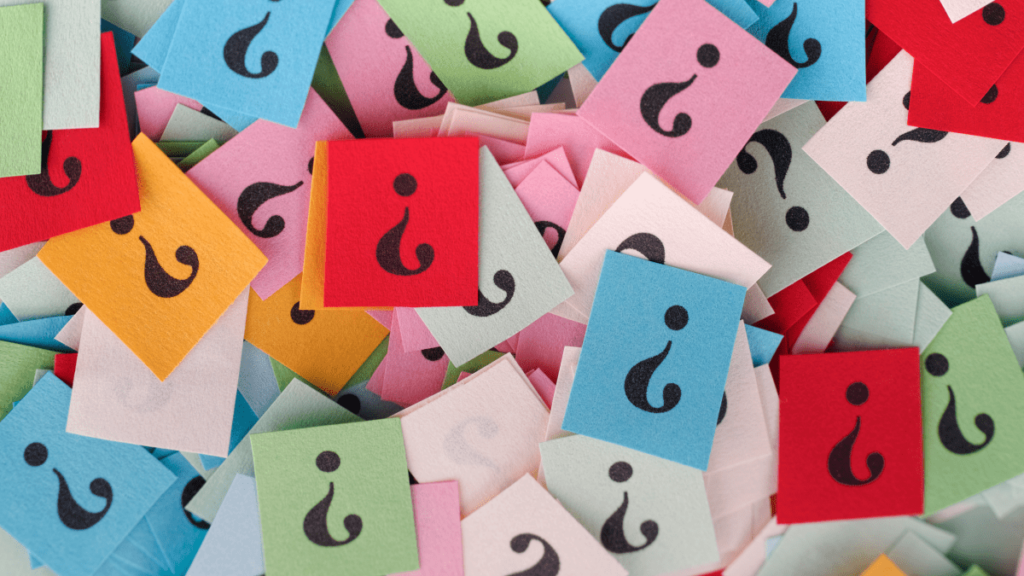
Πηγή: https://www.babbel.com
Ακολουθούν ορισμένες συμβουλές για την επιλογή του σωστού μελανιού και χαρτιού μεταφοράς για την προβλεπόμενη εφαρμογή εκτύπωσης εξάχνωσης:
Σκεφτείτε το υπόστρωμά σας
Ο τύπος του υποστρώματος στο οποίο σκοπεύετε να εκτυπώσετε θα παίξει μεγάλο ρόλο στον καθορισμό του τύπου μελανιού και χαρτιού μεταφοράς που πρέπει να χρησιμοποιήσετε. Για παράδειγμα, εάν σκοπεύετε να εκτυπώσετε σε υφάσματα με βάση τον πολυεστέρα, θα χρειαστείτε μελάνι και χαρτί μεταφοράς που έχουν σχεδιαστεί ειδικά για χρήση με πολυεστέρα.
Ελέγξτε τη συμβατότητα εκτυπωτή
Βεβαιωθείτε ότι το μελάνι και το χαρτί μεταφοράς που επιλέγετε είναι συμβατά με το μοντέλο του εκτυπωτή σας. Ορισμένοι εκτυπωτές ενδέχεται να απαιτούν συγκεκριμένους τύπους μελανιού ή χαρτιού μεταφοράς για την παραγωγή εκτυπώσεων υψηλής ποιότητας.
Εξετάστε το Color Gamut
Η χρωματική γκάμα αναφέρεται στο φάσμα των χρωμάτων που μπορεί να παραχθεί από το μελάνι. Αναζητήστε μελάνι και χαρτί μεταφοράς που προσφέρουν μεγάλη γκάμα χρωμάτων, καθώς αυτό θα σας επιτρέψει να επιτύχετε πιο ζωντανά και ακριβή χρώματα στις εκτυπώσεις σας.
Αναζητήστε Fast Drying Times
Ορισμένα μελάνια εξάχνωσης ενδέχεται να απαιτούν μεγαλύτερο χρόνο στεγνώματος προτού είναι έτοιμα για μεταφορά θερμότητας. Για ταχύτερους χρόνους παραγωγής, αναζητήστε μελάνι που προσφέρει γρήγορους χρόνους στεγνώματος.
Επιλέξτε Χαρτί μεταφοράς υψηλής ποιότητας
Η ποιότητα του χαρτιού μεταφοράς μπορεί να έχει μεγάλο αντίκτυπο στην ποιότητα των εκτυπώσεων σας. Αναζητήστε χαρτί μεταφοράς που έχει υψηλό ρυθμό απελευθέρωσης και είναι ειδικά σχεδιασμένο για εκτύπωση εξάχνωσης.
Εξετάστε τις επιλογές επίστρωσης
Ορισμένα χαρτιά μεταφοράς διαθέτουν επίστρωση που έχει σχεδιαστεί για να βελτιώνει την απορρόφηση του μελανιού και την ποιότητα μεταφοράς. Αναζητήστε χαρτί μεταφοράς με επίστρωση που να είναι συμβατή με το μελάνι και το υπόστρωμά σας.
Ψάξτε για Αξία
Λάβετε υπόψη το κόστος του μελανιού και του χαρτιού μεταφοράς όταν κάνετε την επιλογή σας, αλλά και φροντίστε να επιλέξετε υλικά υψηλής ποιότητας που θα παράγουν τα αποτελέσματα που θέλετε.
Πλεονεκτήματα και μειονεκτήματα

Πηγή: https://www.shutterstock.com
Φόντα
- Εκτυπώσεις υψηλής ποιότητας: Η εκτύπωση εξάχνωσης παράγει υψηλή ποιότητα, ζωηρός, και εκτυπώσεις μεγάλης διάρκειας που είναι ανθεκτικές στο ξεθώριασμα και το ξεφλούδισμα.
- Μεγάλη γκάμα υποστρωμάτων: Η εκτύπωση εξάχνωσης μπορεί να χρησιμοποιηθεί σε διάφορα υποστρώματα, συμπεριλαμβανομένων υφασμάτων με βάση πολυεστέρα, κεραμικά, μέταλλα, πλαστικά είδη, κι αλλα.
- Προσαρμογή: Η εκτύπωση εξάχνωσης επιτρέπει την προσαρμογή των σχεδίων, καθιστώντας το ιδανικό για εξατομικευμένα δώρα, ενδύματα, και διαφημιστικά αντικείμενα.
- Χωρίς υπολείμματα: Η εκτύπωση εξάχνωσης δεν αφήνει υπολείμματα στο υπόστρωμα, καθιστώντας το μια πιο καθαρή και πιο φιλική προς το περιβάλλον μέθοδο εκτύπωσης.
- Οικονομικά αποδοτική: Η εκτύπωση εξάχνωσης είναι μια οικονομικά αποδοτική μέθοδος εκτύπωσης, ειδικά για μικρότερες ποσότητες, καθώς το κόστος ανά εκτύπωση μειώνεται όσο αυξάνεται η ποσότητα.
Μειονεκτήματα
- Περιορισμένη χρωματική γκάμα: Η εκτύπωση εξάχνωσης έχει περιορισμένη χρωματική γκάμα, καθώς μπορεί να παράγει μόνο χρώματα που βρίσκονται εντός της χρωματικής γκάμα του επιλεγμένου μελανιού.
- Περιορισμένες επιλογές υποστρώματος: Η εκτύπωση εξάχνωσης είναι κατάλληλη μόνο για υποστρώματα που είναι κατασκευασμένα από πολυεστέρα ή έχουν επίστρωση πολυεστέρα, που περιορίζει το εύρος των υποστρωμάτων που μπορούν να χρησιμοποιηθούν.
- Κόστος εξοπλισμού: Η εκτύπωση εξάχνωσης απαιτεί εξειδικευμένο εξοπλισμό, συμπεριλαμβανομένου ενόςεκτυπωτής εξάχνωσης, θερμαινόμενος, και εξειδικευμένο μελάνι και χαρτί μεταφοράς, που μπορεί να είναι ακριβό.
- Καμπύλη μάθησης: Η εκτύπωση εξάχνωσης απαιτεί κάποια ικανότητα και εμπειρία για να επιτευχθούν τα καλύτερα αποτελέσματα, και υπάρχει μια καμπύλη μάθησης που εμπλέκεται στην κατάκτηση της τεχνικής.
- Ακατάλληλο για σκούρα υποστρώματα: Η εκτύπωση εξάχνωσης δεν λειτουργεί καλά σε σκούρα υποστρώματα, ως τομελάνι εξάχνωσης είναι ημιδιαφανές και δεν φαίνεται καλά σε σκούρα χρώματα.
Δημιουργικές Δυνατότητες με Εκτύπωση Εξάχνωσης

Πηγή: https://blog.bookbaby.com
Η εκτύπωση εξάχνωσης προσφέρει ένα ευρύ φάσμα δημιουργικών δυνατοτήτων, καθιστώντας το μια δημοφιλή επιλογή για εξατομικευμένα δώρα, ενδύματα, και διαφημιστικά αντικείμενα. Ακολουθούν ορισμένες δημιουργικές δυνατότητες με την εκτύπωση εξάχνωσης:
- Προσαρμοσμένη ενδυμασία
Η εκτύπωση εξάχνωσης επιτρέπει την εκτύπωση παντού σε υφάσματα με βάση πολυεστέρα, καθιστώντας το ιδανικό για τη δημιουργία προσαρμοσμένων μπλουζών, φανέλες, και άλλα είδη ένδυσης με έγχρωμα σχέδια.
- Εξατομικευμένα δώρα
Η εκτύπωση εξάχνωσης μπορεί να χρησιμοποιηθεί για τη δημιουργία εξατομικευμένων δώρων, όπως κούπες, καριέρες, θήκες τηλεφώνων, και πλαίσια φωτογραφιών. Οι δυνατότητες είναι ατελείωτες, και μπορείτε να εκτυπώσετε οτιδήποτε, από οικογενειακές φωτογραφίες μέχρι αγαπημένα αποσπάσματα.
Διαφημιστικά είδη: Η εκτύπωση εξάχνωσης είναι ιδανική για τη δημιουργία διαφημιστικών αντικειμένων, όπως στυλό, μπρελόκ, και μπουκάλια νερού, με το λογότυπο ή το μήνυμά της εταιρείας σας.
- Σήμανση
Η εκτύπωση εξάχνωσης μπορεί να χρησιμοποιηθεί για τη δημιουργία σήμανσης, όπως πανό και σημαίες, για εκδηλώσεις, εμπορικές εκθέσεις, και των επιχειρήσεων.
- Διακόσμηση σπιτιού
Η εκτύπωση εξάχνωσης μπορεί να χρησιμοποιηθεί για τη δημιουργία προσαρμοσμένων ειδών διακόσμησης σπιτιού, όπως ριχτάρι μαξιλάρια, τέχνη τοίχου, και δρομείς τραπεζιού.
- Αθλητικός εξοπλισμός
Η εκτύπωση εξάχνωσης μπορεί να χρησιμοποιηθεί για τη δημιουργία προσαρμοσμένου αθλητικού εξοπλισμού, όπως μπάλες ποδοσφαίρου, μπάσκετ, και φρίσμπι.
- Αξεσουάρ για κατοικίδια
Η εκτύπωση εξάχνωσης μπορεί να χρησιμοποιηθεί για τη δημιουργία εξατομικευμένων αξεσουάρ για κατοικίδια, όπως ετικέτες κατοικίδιων και μπαντάνες.
- Είδη καινοτομίας
Η εκτύπωση εξάχνωσης μπορεί να χρησιμοποιηθεί για τη δημιουργία μοναδικών αντικειμένων καινοτομίας, όπως παζλ, τραπουλόχαρτα, και μαγνήτες.
Συνήθη λάθη προς αποφυγή

Πηγή: https://www.dreamstime.com
Η εκτύπωση εξάχνωσης σε υφάσματα μπορεί να είναι λίγο δύσκολη, και υπάρχουν αρκετά κοινά λάθη που μπορεί να συμβούν. Ακολουθούν ορισμένα λάθη που πρέπει να αποφύγετε κατά την εκτύπωση εξάχνωσης σε υφάσματα:
- Χρησιμοποιώντας λάθος ύφασμα
Η εκτύπωση εξάχνωσης λειτουργεί καλύτερα σε υφάσματα με βάση πολυεστέρα, οπότε φροντίστε να επιλέξετε ύφασμα που είναι τουλάχιστον 50% πολυεστέρας. Αποφύγετε τη χρήση υφασμάτων που είναι πολύ ελαστικά ή έχουν υψηλή περιεκτικότητα σε βαμβάκι, καθώς μπορεί να μην έχουν καλά αποτελέσματα.
- Δεν προετοιμάζεται σωστά το ύφασμα
Πριν την εκτύπωση, φροντίστε να πιέσετε εκ των προτέρων το ύφασμα για να αφαιρέσετε τυχόν υγρασία και ρυτίδες. Αυτό θα εξασφαλίσει ότι το ύφασμα είναι επίπεδο και έτοιμο να δεχτεί το μελάνι.
- Δεν χρησιμοποιεί αρκετή πίεση
Για να εξασφαλίσει μια καλή μεταγραφή, το ύφασμα πρέπει να πιέζεται με αρκετή πίεση. Φροντίστε να προσαρμόσετε την πίεση στην πρέσα θερμότητας σύμφωνα με τις προτεινόμενες ρυθμίσεις για το υπόστρωμά σας.
- Δεν χρησιμοποιείτε το σωστό μελάνι
Βεβαιωθείτε ότι έχετε επιλέξει μελάνι εξάχνωσης που έχει σχεδιαστεί ειδικά για χρήση με υφάσματα. Η χρήση λανθασμένου μελανιού μπορεί να οδηγήσει σε κακή ποιότητα μεταφοράς και ακρίβεια χρώματος.
- Μη χρήση του κατάλληλου χαρτιού μεταφοράς
Επιλέξτε χαρτί μεταφοράς που έχει σχεδιαστεί ειδικά για χρήση με υφάσματα. Η χρήση λανθασμένου χαρτιού μεταφοράς μπορεί να οδηγήσει σε κακή ποιότητα μεταφοράς και ακρίβεια χρώματος.
- Μη χρήση της σωστής θερμοκρασίας και χρόνου
Βεβαιωθείτε ότι χρησιμοποιείτε τις προτεινόμενες ρυθμίσεις θερμοκρασίας και χρόνου για την πρέσα θερμότητας. Η χρήση πολύ λίγου ή πολύ χρόνου ή θερμότητας μπορεί να οδηγήσει σε κακή ποιότητα μεταφοράς και ακρίβεια χρώματος.
συμπέρασμα

Πηγή: https://www.pinterest.com.au
Συμπερασματικά, Η επιλογή του σωστού εκτυπωτή εξάχνωσης είναι ζωτικής σημασίας για την επίτευξη υψηλής ποιότητας, εκτυπώσεις μεγάλης διάρκειας σε διάφορα υποστρώματα. Λαμβάνοντας υπόψη παράγοντες όπως ο τύπος του εκτυπωτή, τύπο μελανιού, έγχρωμη γκάμα, και μέγεθος φύλλου, μπορείτε να επιλέξετε τον καλύτερο εκτυπωτή εξάχνωσης για τις ανάγκες σας.
Επιπροσθέτως, είναι σημαντικό να επιλέξετε υψηλής ποιότητας χαρτί εξάχνωσης που είναι συμβατό με τον εκτυπωτή και το υπόστρωμά σας. Για όσους αναζητούν εναλλακτική στην εκτύπωση εξάχνωσης, Εκτυπωτής DTFs και Εκτυπωτής DTGs είναι επίσης επιλογές που πρέπει να εξεταστούν. Με τις πληροφορίες και τις συμβουλές που παρέχονται σε αυτόν τον πλήρη οδηγό για εκτυπωτές εξάχνωσης, μπορείτε να επιλέξετε με σιγουριά τον κατάλληλο εκτυπωτή για τις ανάγκες σας και να πετύχετε εκτυπώσεις επαγγελματικής ποιότητας που θα εντυπωσιάσουν.

